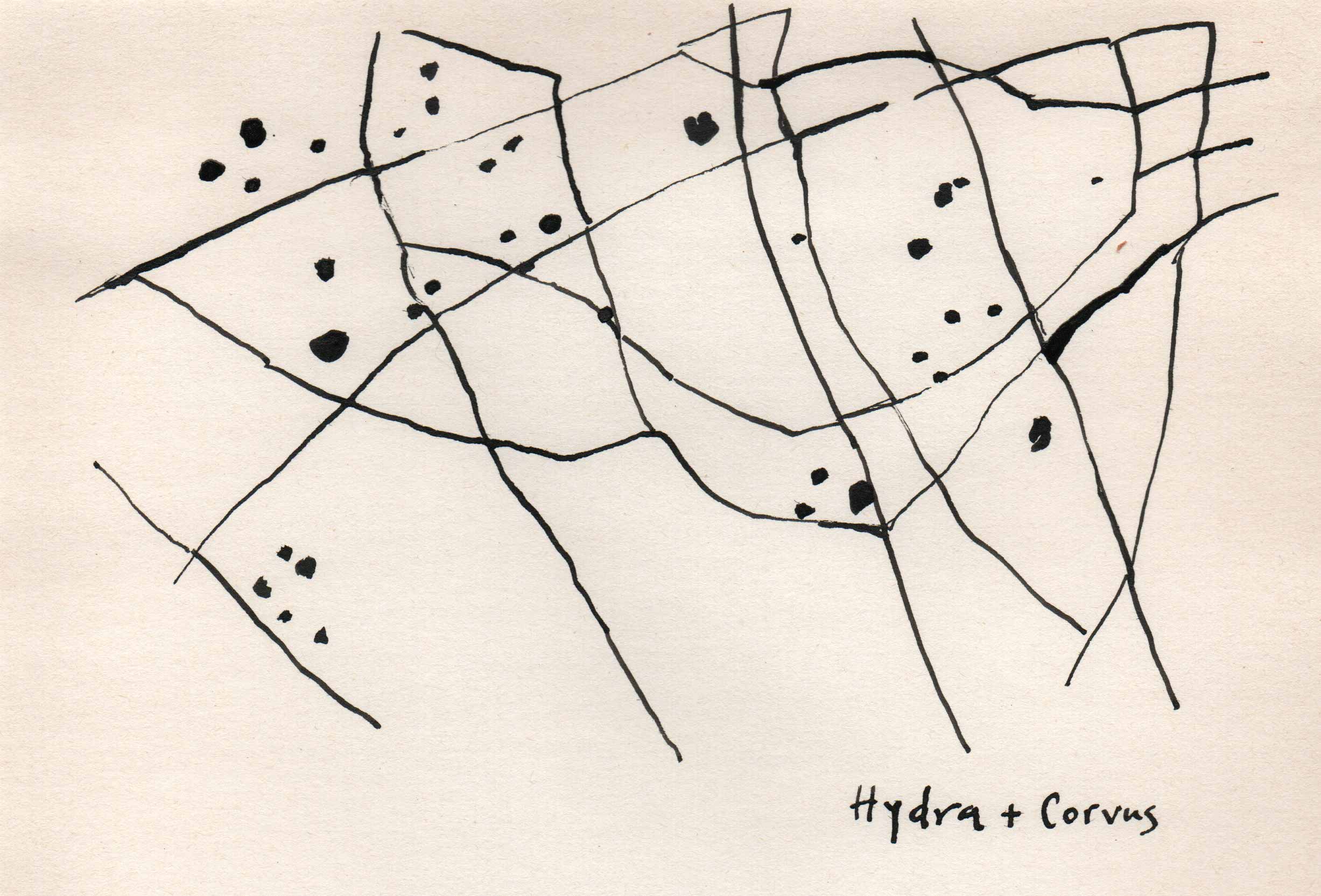

Symbols of Hiyu: Scallop Shell
The sideways scallop shell
is the time-honored emblem
of the Camino de Santiago
(the Way of St. James)
pilgrimage in Spain.
Artwork by China Tresemer
It’s used to mark the way on trees, sidewalks, tiles, and buildings. While the shell’s symbolic origins are opaque, its myth is tied to the ship carrying St. James’ martyred body from Palestine to Santiago de Compostela in Galicia, and its use on the Camino dates back to medieval times, when pilgrims wore the shell to represent their quest and as a vessel for eating and drinking along their long journey.


We selected the shell to symbolize the wine Corvus, which comes from the Field of Stars: a parcel in the far northeast of Hiyu that’s less sloping and more expansive than the rest of the farm, which makes it feel more open to the stars. All of the wines up there are named for constellations — Columba, Corvus, Noctua, and Draco — situated around the constellation of Argo, which is the ship of Jason and the Argonauts. Their quest for the Golden Fleece supposedly took them to Kutaisi in modern-day Georgia, the birthplace of wine.
Corvus, which is based on Cabernet Franc and Mencia grapes, relates to the Camino because Cabernet Franc came from the Abbey Roncesvalles, which is at the beginning of the Camino. Mencia — which has a similar flavor and texture expression to Cabernet Franc, but is in no way genetically related to it — comes from Galicia, so with Corvus we unite two grapes that are linked geographically and (according to the Codex Calixtinus) astrologically by the Camino.

The Codex is a 12th century anthology compiling texts associated with St. James, including a report that one night Charlemagne saw “a road of stars” stretching from the Frisian Sea to Galicia. And, in fact, the Camino appears to follow the route of the Milky Way.
According to the tale, St. James then tasked Charlemagne with liberating the way to allow pilgrims to visit his grave. Charlemagne undertook the mission until reaching Zaragoza, where he was forced by the Basque army to retreat via Roncesvalles. The Camino’s relationship to the cosmos is further emphasized by its final destination, Santiago de Compostela. Compostela, which comes from the Latin “campus stellae,” means “field of stars,” a nod to the awe-inspiring galaxy views encountered along the way.
The labels from the Field of Stars reflect this dynamic intersection of celestial and terrestrial, earthly and spiritual, as well as the notion of movement inherent to these interpretations. Each label visually connects to another via cartographic lines, so you’re actually moving through space, which ties to ideas of biodynamics: the idea that we’re listening to the language of the planets, stars, constellations … how they all relate and how that imprints on the land.
Astrology can be like a map. Your personal astrology is like a map of your life and your soul and your personality. As such, it’s not going to be a literal interpretation. It’s like a line drawing of this thing that you then have to walk or live. Astrology in biodynamics is similar. It’s not a literal extraction of what you’re supposed to do; it’s an indication of what might be coming or what influences are around you, and how you can be aware of them and utilize that knowledge so that you’re taking care of the land in a way that’s insync with these forces.


Tales



